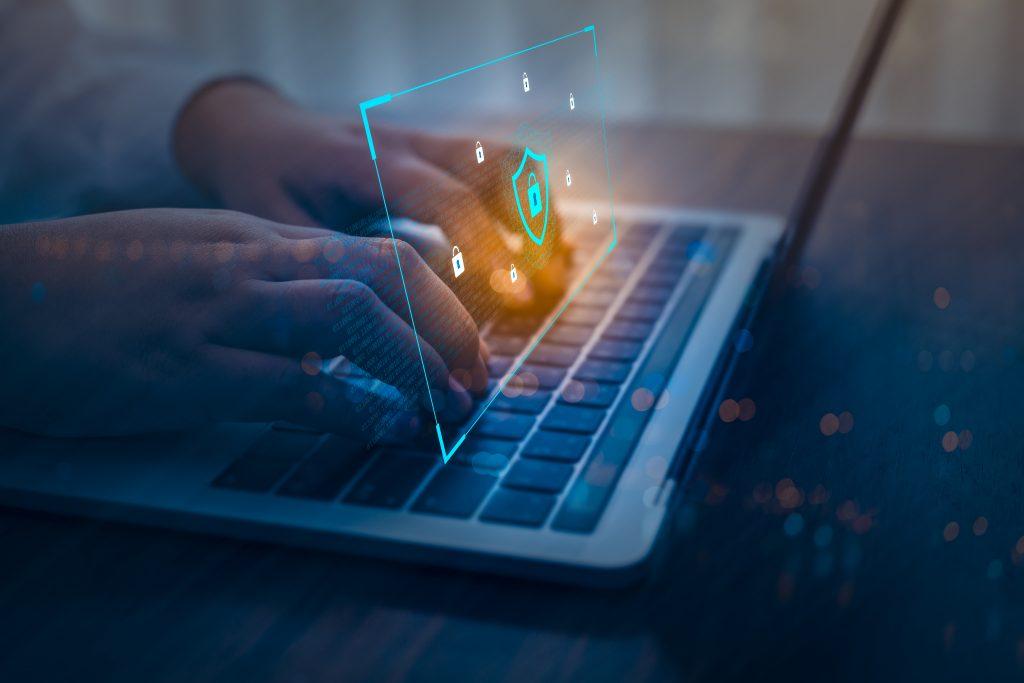Businesses of all sizes have to constantly be on the lookout for cybersecurity threats. Robotic Process Automation (RPA) allows you to speed up workflows while eliminating highly repetitive rule-based actions. This goes a long way in ensuring that sensitive data doesn’t fall victim to cyber-attacks.
Whenever “cybersecurity automation” is mentioned, the first thing that comes to mind is the use of bots to reduce threats and eliminate vulnerabilities that lead to cyber-attacks.
Related article: 5 Ways RPA Reduces Cybersecurity Threats in 2020
Therefore, it’s essential for business managers and CIOs to know how to integrate RPA with cybersecurity so that they fully secure their data environment. According to Forbes Magazine, cybersecurity automation entails:
- Streamlining data collection to make it faster and efficient.
- Bringing AI processes and technologies into the fold; and
- Eliminating time-consuming and tedious tasks so that IT staff can focus on higher-priority tasks and responsibilities.

How to Integrate Cybersecurity with Intelligent Automation
The most significant benefit that automation offers businesses is its ability to mimic human behavior, including mouse clicking and using a keyboard. Since the bots will have privileged access to your company's enterprise resources and systems, sensitive data might be exposed to attackers. Therefore, you need adequate security measures in place.
Since employees and bot operators are responsible for deploying automation workflows and handling exceptions, you should avoid re-using human credentials with bots. Sometimes while rushing to deploy programmed robots, organizations fail to distinguish between the bot identities and operators. Consequently, the bots end up being run using human operators.
Such a configuration brings about ambiguity since it’s difficult to univocally attribute actions, mistakes, fraudulent activities, or attacks. Other issues that could arise from re-using human credentials with programmed robots is that admins tend to keep passcode frequency of rotation and complexity to a minimum. Often, they are limited to what’s a reasonable human experience instead of what bots can handle.

Benefits of Integrating Intelligent Automation With Cybersecurity
1. It Helps You Secure Sensitive Information
RPA-powered bots enable you to implement GDPR requirements easily without interfering with your organization’s information stream. These bots also allow you to create backups of essential processes to mitigate against the potential shutdown. Furthermore, they can access the same information remotely. Integrating RPA into your cybersecurity processes helps you secure sensitive information by allowing a complete audit trail.
Phishing is one of the most common and costliest types of cyber-attacks. AI-powered RPA bots offer your organization numerous advantages as far as error reduction is concerned. Generally, these bots don’t query their tasks, nor do they teach others the learning curve required to undertake specific tasks or provide security.
2. Provides Defense Against Unwanted Attacks and Viruses
Programmed robots help your organization to safeguard its security processes. When it comes to malware attacks, it’s employees who decide whether or not to click on unfamiliar links. In case they encounter an antivirus system alert, bots will restrict actual intrusions and the spread of viruses across your network.
Moreover, by running fast-paced analyses of malware alerts, the bots will choose the most relevant data bits and decide how and when to address the threats. If hostile users are detected, for instance, their data access can be disabled remotely. Therefore, RPA can sufficiently keep corporate digital security systems active, thus preventing human error.
Generally, access security is needed to safeguard your organization’s core processes against hacker attacks or unintentional employee error. RPA only allows accredited individuals to access sensitive information. It also adds a layer of encryption, thus thwarting malicious attacks from outside your organization.

What Are the Security Implications of RPA?
Automation introduces new types of risk, more so when accessing cloud data. RPA brings about distinct cyber risks, which can be even more significant than when access is granted to humans. Unlike human operators who can only work for a limited amount of time, robots can work round the clock. Therefore, their security risk is commensurately much more significant. These are some of the security risks that you should keep in mind when using bots:
- External threats, which arise when malicious actors compromise bots to access sensitive data.
- Internal threats that arise when employees or contractors manipulate or train your bots for malicious purposes.
- Unsecure data management, whereby bots access sensitive data but fail to encrypt it before sending it to or from your cloud account.
- Poor system design, which allows bots to inadvertently expose sensitive data to insecure sources.
- Network vulnerabilities, whereby poorly-designed bots allow hackers to attack your network remotely.
- DOS interruptions, whereby scheduled bot activities occur in rapid succession, thus overwhelming the network. This causes a ripple effect of further service disruptions and potential security breaches.
As you integrate RPA into your cybersecurity processes, you should take these cyber risks into account. In doing so, it will be easier for you to put the technology to work and fully reap the benefits of automation and robotics.
The ElectroNeek company is committed to the security of user data and aims to meet generally accepted international security standards. Recent Calaveras Release of the ElectroNeek platform strengthened its system even more with a set of tools to comply with the rules of the generally accepted international ISO/IEC 2700 standard. We are also guided by the principles laid down in the GDPR and aim to bring tools to the platform to help users better understand their rights and obligations under the GDPR.
You can safely analyze productivity on office or work-from-home computers and automatically find opportunities for the elimination of repetitive tasks with software robots. You can Book a demo (for any plan) and make the 1st step in securing your corporate data while routine is automated.
